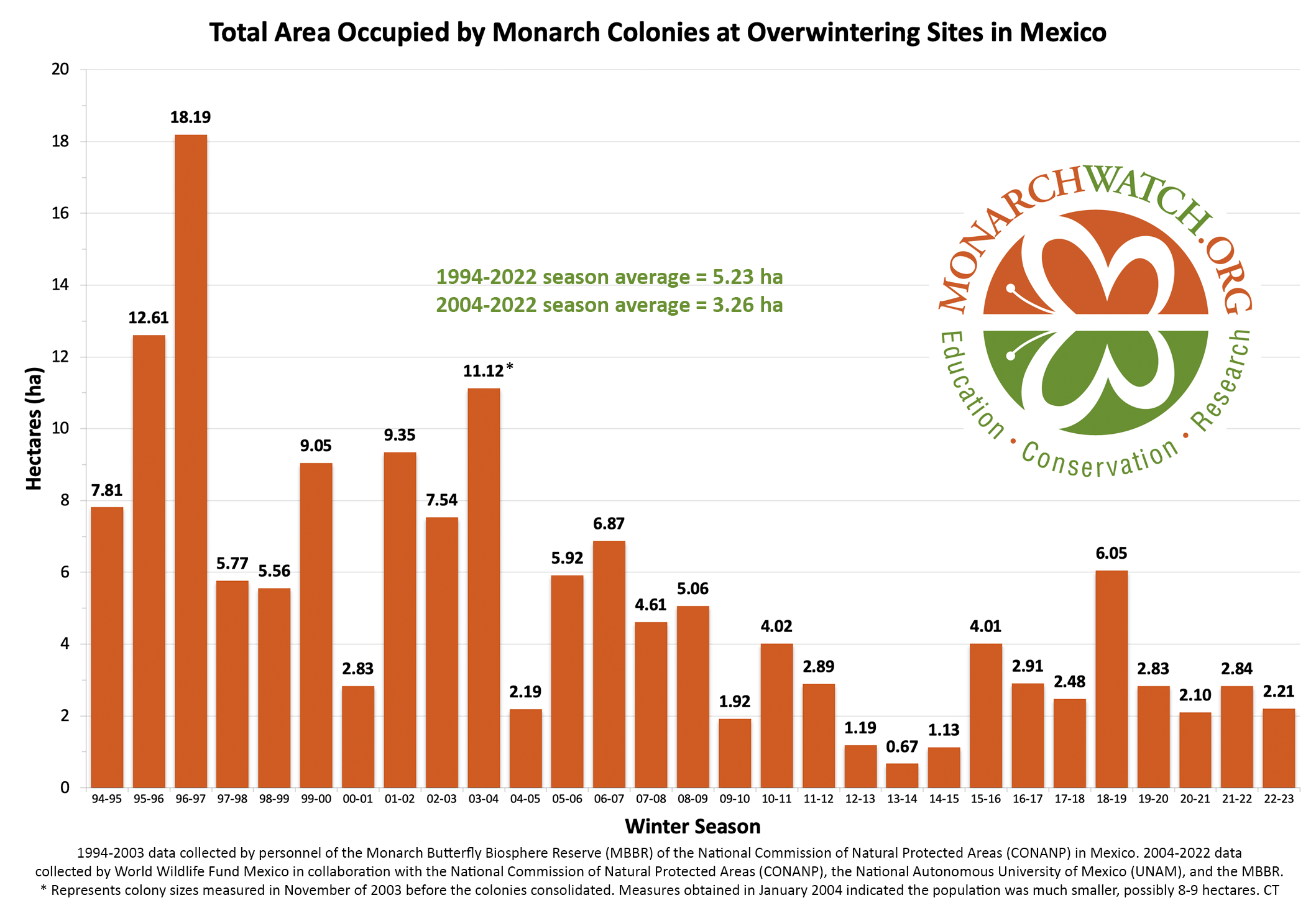Monarch Population Status
Tuesday, March 21st, 2023 at 2:04 pm by Jim LovettFiled under Monarch Population Status | Comments Off on Monarch Population Status
The WWF-Telmex Telcel Foundation Alliance, in collaboration with the National Commission of Natural Protected Areas (CONANP), the National Autonomous University of Mexico (UNAM), and the Monarch Butterfly Biosphere Reserve (MBBR), announced the total forest area occupied by overwintering monarch colonies today. Eleven (11) colonies were located this winter season with a total area of 2.21 hectares, a 22% decrease from the previous season (2.84 ha):

Figure 1. Total Area Occupied by Monarch Colonies at Overwintering Sites in Mexico.
Report (english): Areas of forest occupied by the colonies of monarch butterflies in Mexico during the 2022-2023 overwintering period
WWF story: Troubling news for monarch butterfly populations
Monarch population growth is largely about timing, numbers and weather. Monarch Watch follows the population closely from month to month throughout the year looking for changes that will help us predict the relative size of the population from one interval or stage to the next. This year, starting in May, the data indicated that the mid and late summer numbers would be low and that the migration itself would involve a smaller population than in recent years. This expectation was realized. The number of butterflies tagged during the migration was the lowest in 9 years. This was another sign that the overwintering numbers would be low since the number tagged is correlated with the size of the overwintering population. Two other factors, droughts in Texas and late arrival at the overwintering sites, are associated with low numbers and both occurred last fall.
All in all, monarchs had a bad year due to a sequence of unfavorable weather events. While low numbers are something of a concern, in recent years monarchs recovered from low numbers in 2012 (1.19 ha), 2013 (0.67 ha) and 2014 (1.13 ha) and they will do so again – weather permitting. For more information on the status of the population through the last season see monarchwatch.org/blog/2023/01/04/monarch-population-status-49
Note:
The WWF-TELMEX Telcel Foundation Alliance collaborates with CONANP to systematically monitor the hibernation of the Monarch since 2004, and they join the Institute of Biology of the National Autonomous University of Mexico (UNAM) to analyze changes in forest cover in the area core of the Monarch Butterfly Biosphere Reserve in order to have scientific bases that support the implementation of conservation strategies for the benefit of the species, ecosystems and human beings.


Sorry, comments for this entry are closed at this time.